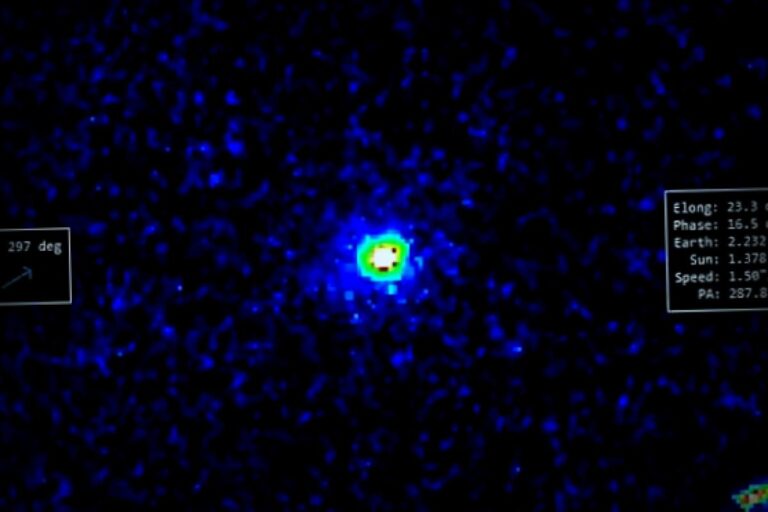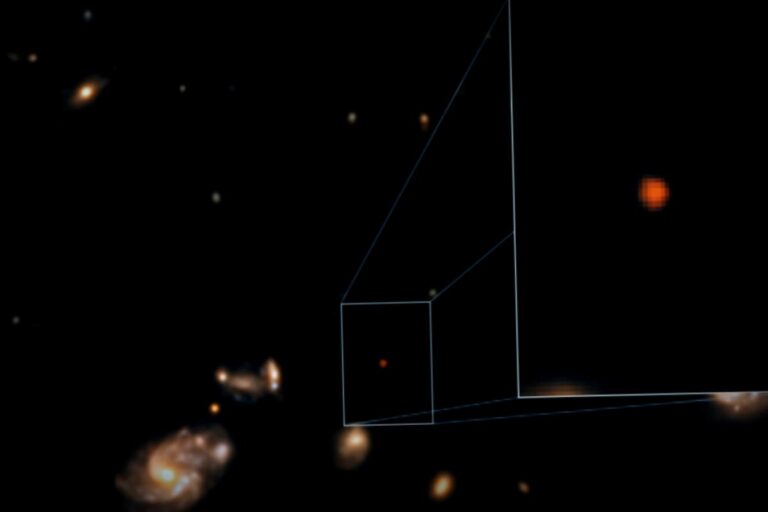The wonders of the James Webb Space Telescope (JWST) just took an exciting twist! Astronomers have detected an incredibly bright and puzzling object, which might be none other than a galaxy that formed a mere 100 million years following the Big Bang! If this holds true, it would be the oldest known galaxy in the universe, as suggested by a recent study.
However, there’s a twist — this mysterious object, d Capotauro, might be an extraordinary brown dwarf instead. Brown dwarfs, sometimes referred to as “failed stars”, are larger than the biggest gas giants but lack the mass required for nuclear fusion. Capotauro seems to be on the quiet outskirts of the Milky Way, with a temperate glow of only 80 degrees Fahrenheit (or about 27 degrees Celsius).
Despite the excitement, researchers are still trying to pin down exactly what Capotauro is. According to a paper released on September 1 on the preprint server arXiv (but yet to undergo peer review), the identity of this object remains uncertain.
Co-author Giovanni Gandolfi, an astrophysicist from the National Institute of Astrophysics in Italy, shared with Live Science that Capotauro is both fascinating and promising, no matter what it turns out to be.
Gandolfi and his crew first spotted Capotauro while examining photographs from JWST, aiming to discover very ancient galaxies. Unfortunately, the data they initially received was sort of like getting a snippet of DNA at a crime scene without any solid matches in the FBI database.
But then, in March, new data came along from JWST that was like uncovering a partial fingerprint in a suspect database, giving them the tools to filter through possibilities and narrow it down considerably.
To scrutinize what Capotauro might be, the researchers used imagery collected by JWST’s Near Infrared Camera (NIRCam) across seven different wavelengths as part of the Cosmic Evolution Early Release Science (CEERS) survey. Capotauro was only detected at the two longest wavelengths, but this helped them clarify its brightness.
Furthermore, they managed to utilize more detailed data from the JWST’s Near Infrared Spectrograph (NIRSpec) to develop a clearer image of what Capotauro’s age and temperature might look like.
Merging the NIRCam insights with NIRSpec findings, the team tested out three potential configurations for Capotauro as a galaxy and even considered scenarios of it being a brown dwarf at the frontier of the Milky Way. They explored numerous other theories, including it being a polarizing young galaxy or a bizarre exoplanet.
Although none of these hypotheses provided definite conclusions, the researchers managed to spotlight the two most likely prospects.
Under the assumption that Capotauro is indeed an early galaxy, it would date back around 100 million years post-Big Bang, resurrecting the age of the previously oldest known galaxy by about 200 million years and potentially weighing in at a whopping over a billion solar masses.
On the other hand, if Capotauro is a rare brown dwarf, it would be recognized as the coldest and furthest-known brown dwarf in our galaxy, setting it at over seven light-years away, with a low temperature of just 300 kelvins (80 F or 27 C). Should Capotauro be the enigmatic brown dwarf, it offers scientists a unique opportunity to delve into the formation processes of our galaxy.
Both potential outcomes spark an exhilarating possibility, challenging our previous knowledge about galaxy formation and evolution processes. Gandolfi commented on how encouraging these discoveries truly are.
Muhammad Latif, an astrophysicist from the United Arab Emirates University, remarked that Capotauro stands out as one of the most intriguing discoveries emerging from JWST thus far. It parallels the edges of our understanding!
To confidently clarify Capotauro’s attributes, researchers need more detailed data regarding the light this object emits. They’ve submitted a request for JWST to gather additional information about this elusive quarry while also scouting for similar objects in other parts of the universe.
















